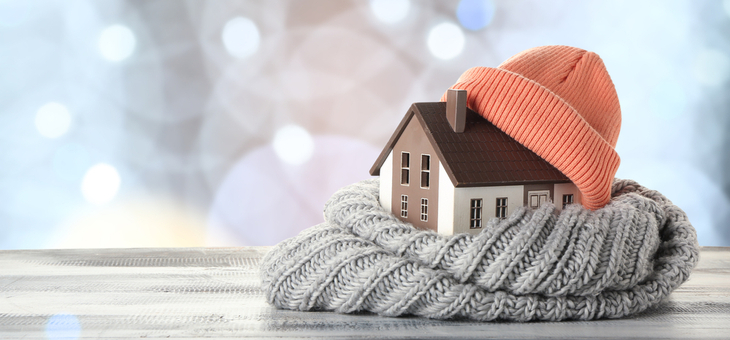The onset of winter brings out heaters and thoughts of how we can best keep ourselves warm in the colder months.
It also reminds us that many of our houses are not fit for purpose. Design site architectureanddesign.com.au says energy efficient homes use double glazing on windows, insulation, solar panels, and in-slab heating.
“The orientation of the house, thermal mass, ventilation, and insulation are all important aspects of eco house design. So are spatial zoning, shading, and glazing.”
For those of us stuck with inefficient houses, we need some help keeping warm.
Here are some hints from environmentvictoria.org.au, choice.com.au, ABC News and The Conversation.
Read more: Technology that helps you sleep better
Windows and curtains
A single pane of glass can lose up to 10 times as much heat as an insulated wall. Up to 40 per cent of the heat escaping from your home in winter is from uncovered windows. Heavy, lined curtains, which extend below the window frame, help retain warmth. And it need not be ruinously expensive: Here are instructions to make your own curtains.
Doors and chimneys
Next, block up your chimney and under your doors. Sustainability Victoria says a quarter of all heat loss is via “air leakage” through windows, doors, and chimneys. Cheap door snakes reduce heat loss beneath doors, rugs can cover gaps in floorboards and silicone sealant, weather seal tape and draught strips from the hardware store seal other holes and cracks. “In your average Victorian home, if you added up all the cracks and gaps, it would be the equivalent of having a 1 metre by 1.5 metre window open all the time,” environmentvictoria.org.au advises.
Room use
Get your fill of free energy by closing off rooms you aren’t using and to open your blinds and curtains during the day when the sun shines. Open north facing coverings for the morning sun and west facing ones for the afternoon sun.
Read more: Benefits of smart technology in the home
Heaters
Price can be deceptive
Consumer experts choice.com.au put it bluntly: “Our product testing often reveals retail price isn’t the best indicator of performance”. So do your research. Some models, which cost less than $100, are more effective than those costing hundreds of dollars more. And some of the cheapo units are total duds. Check out consumer comparison and feedback sites such as CHOICE to avoid those that are a waste of money at any price. And don’t forget to consider the running costs of each model, which can vary by over $150 per year.
Maintenance
You may be amazed at the improvement you experience when you clean vents and filters of dust. It’s the cheapest way of improving your heater’s performance.
Regularly cleaning your appliances means better energy efficiency and lower running costs. The more clogged the dust filters and the interior of the machine, the harder it works and the more energy it uses.
Professional servicing may be necessary if you can’t get up the ladder.
Ceiling fans on reverse mode and your air conditioner
If you have a room that needs to be heated often, an effective and efficient option might be a reverse-cycle air conditioner, Professor Peta Ashworth, chair of sustainable energy futures at the University of Queensland, told ABC News.
These devices extract heat from outside air and bring it inside and can use as little as one-fifth of the energy of a standard electric heater.
Switch your fans to reverse or winter mode (clockwise) and use them alongside your heating system to distribute hot air more evenly, so your heater works less to maintain a constant temperature. This will reduce power consumption and bills.
CHOICE expert Chris Barnes suggests you try to stick to a difference of about 8 degrees Celsius between the temperature on your reverse-cycle air conditioner and the outside temperature. Each degree warmer adds approximately 10 per cent to the running cost of your air conditioner.
It is suggested you heat rooms to 20 degrees Celsius in winter. If you don’t have a programmable thermostat, you can place a thermometer in the main room you are heating.
Electric heater
While they can be more expensive to run, electric heaters are relatively cheap to buy and can generate a lot of heat.
In a larger space, Prof. Ashworth says you should consider anelectric convection or panel heater.Those with fans installed spread heat evenly through a space.
If you need to heat a small room for a short time, a small portable electric heater could still be a good option. Just don’t run them for hours on end.
What sort of heater do you use? Have you tried methods apart from heaters to improve the warmth of your rooms?
Read more: Which portable heater is best?
If you enjoy our content, don’t keep it to yourself. Share our free eNews with your friends and encourage them to sign up.

